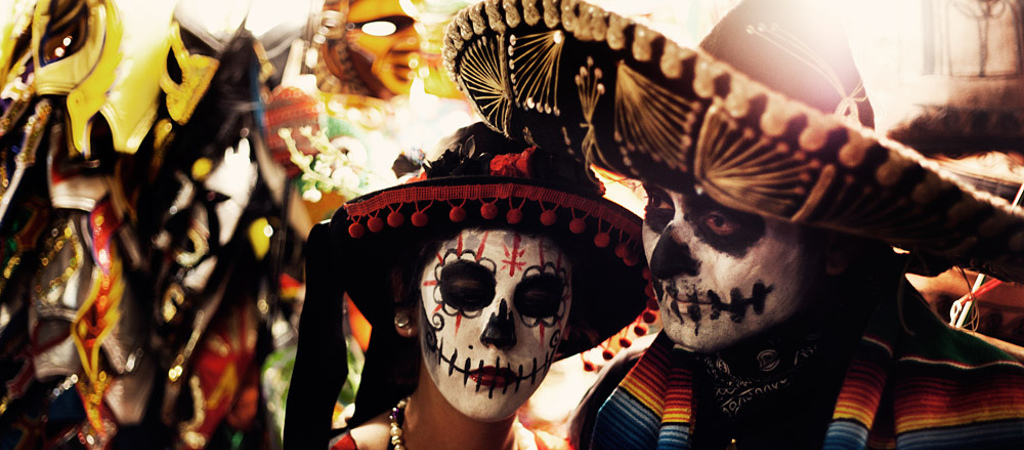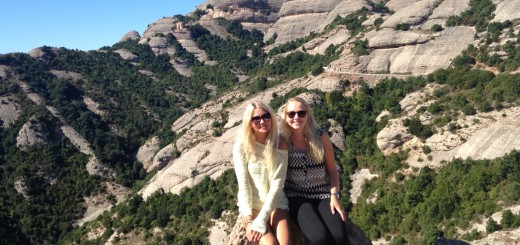6 wicked alternatives to Halloween
Thanks to the influence of American pop culture in the 80s, Halloween is now globally established as the spooky holiday of the year. But there are some great alternatives that deserve to be recognised just as much, mostly because they manage to take the weirdness to a whole new level. So forget trick or treating and pumpkin spiced lattes for a second and say hello to some of Halloween’s even weirder sisters…

El Día de los Muertos, Mexico
The lavish celebrations of el Dia de los Muertos, or the Day of the Dead, in Mexico add some cultural pizzazz to a holiday that alludes to Halloween, but is much more family orientated and far less commercial. Traditionally celebrated by indigenous tribes in Mexico on November 1st, the festival marks the return of dead loved ones to the land of the living. The people help to assist the souls’ return by decorating the route from the cemeteries to their homes with candles, flower petals and those now infamous sugar skulls which are fast transitioning into the Western Halloween tradition.
Chuseok, South Korea
South Koreans also take the time to pay homage to their dead relatives during Chuseok, a three day festival celebrated around the end of September. People normally return to the home of their ancestors and carry out rituals at the tombs, which mostly involve leaving offerings of traditional Korean food and rice wine. Although slightly more jolly than most festivals that pay homage to the dead, what with all the feasting and drinking involved, it still has its spectacular moments like the Ssireum, the traditional wrestling match that takes place during this time and the Ganggangsullae dance that is performed by locals in traditional dress.
Pangangaluluwa, the Philippines
In a spooky coincidence, Filipinos celebrate the holiday of Pangangaluluwa on the same night as Halloween, despite sharing no discernable origins with the originally Celtic pagan festival. The festival originates from the belief that the dead revisit the earth on this night and steal something from whomever they would choose to visit as proof that they had been there. Nowadays, it has become tradition to pinch an item from a loved one, then for it to show up in an odd place the next day. As well as all the looting, locals engage in their own version of trick or treating by visiting houses and singing in exchange for gifts or money.
The Hungry Ghost Festival, China
Hands down the winner for best spooky holiday name, the Hungry Ghost Festival is part of Ghost Month, (yes that’s right – this goes on for a whole month), which is celebrated in China by Buddhists and Taoists. During the holiday, ghosts come back from the underworld to pay a visit to their mortal relatives who look after them with plenty of feasting and worshipping; they even perform an opera for their ghouly kin. The festivities culminate with the Hungry Ghost Festival where people burn paper money and anything else flammable so that their loved ones stay cosy when they return to the underworld. They also light paper lanterns to guide the spirits back home.
Walpurgisnacht, Germany
Walpurgisnacht goes against spooky holiday tradition and is celebrated in Germany during Spring rather than Autumn. Originating from the days when the peasants would try and defer the witches and warlocks from descending to their villages, mostly by hanging crosses on their doors, dancing and lighting bonfires, it has now become something more of a celebration of the witches than a means to try and scare them away. The bonfires and crazy dancing still remain though and hundreds of visitors flock to the mountains each year to take part in the celebrations.
Famadihana, Madagascans
Saving the eeriest festival for last, of course, the Madagascans celebrate the festival of Famadihana, meaning literally ‘the turning of the bones’, only once every seven years, but probably for good reason. Madagascans take this time to exhume the corpses of dead family members by unwrapping them, cleaning them and wrapping them for re-burial. Photos are often taken with dead relatives and then they raise the corpses into the air and dance around with them before burying them again with presents, such as family photos, money or alcohol. Just because they must get really bored down there, obviously…
Image: Dia De Los Muertos Festival, Los Angeles, 11.01.10 by Rob Sheridan, CC 2.0



